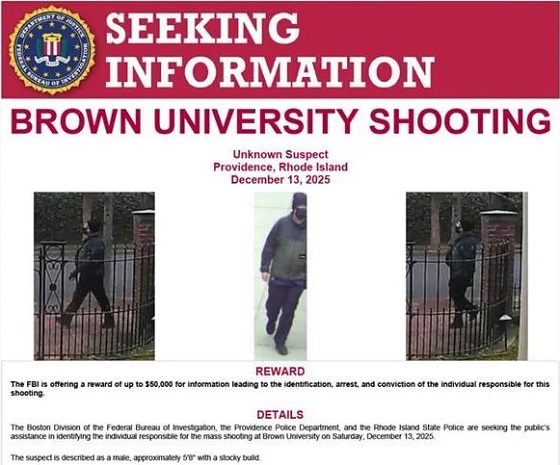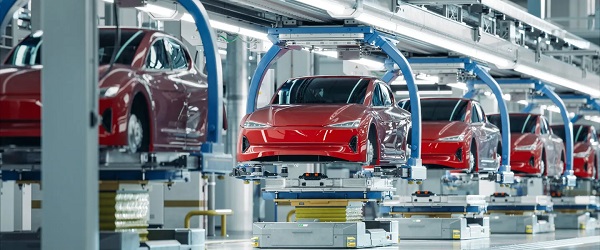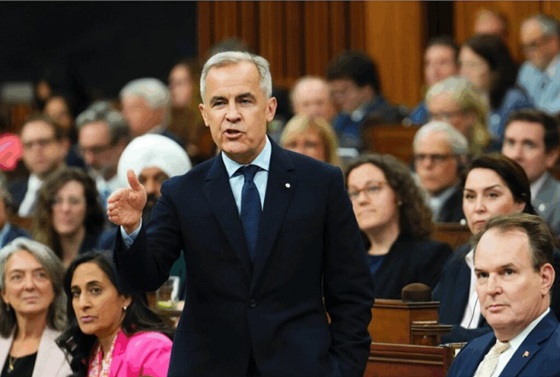Uncategorized
Hard-hit Indonesian city buries its dead as toll tops 840

PALU, Indonesia — Brightly colored body bags were placed side-by-side in a freshly dug mass grave Monday, as a hard-hit Indonesian city began burying its dead from the devastating earthquake and tsunami that killed more than 840 people and left thousands homeless.
The death toll, largely from the city of Palu, is expected to keep rising as areas cut off by the damage are reached. The magnitude 7.5 earthquake struck at dusk Friday and generated a tsunami said to have been as high as 6
Local army commander Tiopan Aritonang said 545 bodies would be brought to the grave from one hospital alone. The trench dug in Palu was 10
“This must be done as soon as possible for health and religious reasons,” he said. Indonesia is majority Muslim, and religious custom calls for burials soon after death, typically within one day.
Local military spokesman Mohammad Thorir said the area adjacent to a public cemetery can hold 1,000 bodies. All of the victims, coming from local hospitals, have been photographed to help families locate where their relatives were buried. Video footage showed residents walking from body bag to body bag, opening the tops to check if they could identify faces.
Around midday, teams of workers, their mouths covered by masks, carried 18 bodies and laid them in the trench. A backhoe waited to push soil on top of the dead. More burials were expected to follow.
Military and commercial aircraft were delivering some aid and supplies. But there was a need for heavy equipment to reach possible survivors buried in collapsed buildings, including an eight-story hotel in Palu where voices had been heard in the rubble.
People suffering from a lack of food and supplies were also becoming more desperate. Local television said around 3,000 residents had flocked to the Palu airport trying to get out. Footage showed some people screaming in anger because they were not able to board departing military aircraft. The airport has resumed only some commercial flights.
“We have not eaten for three days!” one woman yelled. “We just want to be safe!”
Indonesian President Joko “Jokowi” Widodo authorized the acceptance of international help, said disaster agency spokesman Sutopo Purwo Nugroho, adding that generators, heavy equipment and tents were among the items needed. He said the European Union and 10 countries have offered assistance, including the United States, Australia and China.
“We will send food today, as much as possible with several aircraft,” Widodo told reporters in the capital, Jakarta, adding that a supply of fuel was also set to arrive.
Nugroho said conditions in the Balaroa section of Palu were particularly bad because the earthquake caused the ground to violently heave up and sink down in places, trapping many people under destroyed houses. In Petobo, another area of the city, the temblor caused loose, wet soil to liquefy, creating a thick, heavy mud that caused massive damage.
“In Petobo, it is estimated that there are still hundreds of victims buried in mud material,” Nugroho said.
Villagers who pulled out loved ones — alive and dead — over the weekend expressed frustration that it took rescue teams until Monday to reach Petobo.
Edi Setiawan, 32, said he and fellow villagers were able to rescue five children and four adults, including a pregnant woman. However, his sister and father were not among them.
“My sister was found embracing her father,” he said. “My mother was able to survive after struggling against the mud and being rescued by villagers.”
Another villager, 52-year-old Idrus, who uses one name, said that “up to Saturday we still saw many people screaming for help from the roofs. But we could not do anything to help them. Now their cries are no longer heard.”
But there were cases of survivors still being pulled from the rubble in different locations, including a 25-year-old woman found alive Sunday evening in the ruins of the Roa-Roa Hotel, according to the National Search and Rescue Agency, which released photos of her lying on a stretcher covered with a blanket.
Novry Wullur, an officer from Indonesia’s search and rescue agency, said Nurul Istiharah, 15, managed to survive after being trapped inside her house after it collapsed. Her mother and niece were dead beside her, and water had left her submerged up to her neck and in danger of drowning. Her legs were finally freed and she was pulled out of the rubble. She was being treated for hypothermia at a hospital.
The confirmed death toll of 844 released by Nugroho on Monday afternoon was an increase of only 12 since the previous day, with nearly the entire total from Palu. The regencies of Donggala, Sigi and Parigi Moutong — with a combined population of 1.2 million — had yet to be fully assessed. Nearly 50,000 people have been displaced from their homes in Palu alone, Nugroho said.
He said 114 foreigners were in Palu and Donggala during the disaster. All were accounted for except one Belgian, one South Korean and six French.
It was the latest natural disaster to hit Indonesia, which is frequently struck by earthquakes, volcanic eruptions and tsunamis because of its location on the “Ring of Fire,” an arc of volcanoes and fault lines in the Pacific Basin. In December 2004, a massive magnitude 9.1 earthquake off Sumatra island in western Indonesia triggered a tsunami that killed 230,000 people in a dozen countries. More recently, a powerful quake on the island of Lombok killed 505 people in August.
In Donggala, the site closest to the earthquake’s epicenter, aerial footage on Metro TV showed the sugary blond sands of beaches swept out to sea, along with some buildings. Some buildings in the town were severely damaged, with plywood walls shredded and chunks of concrete scattered on the pavement. Much of the damage, however, appeared limited to the waterfront.
Palu, which has more than 380,000 people, was strewn with debris from the earthquake and tsunami. A heavily damaged mosque was half submerged and a shopping mall was reduced to a crumpled hulk. A large bridge with yellow arches collapsed.
The city is built around a narrow bay that apparently magnified the force of the tsunami as the waves raced into the tight inlet. Nugroho said water was reported as high as 6
In one devastated area in Palu, residents said dozens of people could still be buried in their homes.
“The ground rose up like a spine and suddenly fell. Many people were trapped and buried under collapsed houses. I could do nothing to help,” resident Nur Indah said, crying. “In the evening, some of them turned on their cellphones just to give a sign that they were there. But the lights were off later and the next day.”
With hundreds injured, earthquake-damaged hospitals were overwhelmed.
Indonesia is a vast archipelago of more than 17,000 islands home to 260 million people. Roads and infrastructure are poor in many areas, making access difficult in the best of conditions.
___
Associated Press writers Margie Mason, Todd Pitman, Ali Kotarumalos and Chris Nusatya in Jakarta, Indonesia, contributed to this report.
Niniek Karmini, The Associated Press
Uncategorized
Cost of bureaucracy balloons 80 per cent in 10 years: Public Accounts

The cost of the bureaucracy increased by $6 billion last year, according to newly released numbers in Public Accounts disclosures. The Canadian Taxpayers Federation is calling on Prime Minister Mark Carney to immediately shrink the bureaucracy.
“The Public Accounts show the cost of the federal bureaucracy is out of control,” said Franco Terrazzano, CTF Federal Director. “Tinkering around the edges won’t cut it, Carney needs to take urgent action to shrink the bloated federal bureaucracy.”
The federal bureaucracy cost taxpayers $71.4 billion in 2024-25, according to the Public Accounts. The cost of the federal bureaucracy increased by $6 billion, or more than nine per cent, over the last year.
The federal bureaucracy cost taxpayers $39.6 billion in 2015-16, according to the Public Accounts. That means the cost of the federal bureaucracy increased 80 per cent over the last 10 years. The government added 99,000 extra bureaucrats between 2015-16 and 2024-25.
Half of Canadians say federal services have gotten worse since 2016, despite the massive increase in the federal bureaucracy, according to a Leger poll.
Not only has the size of the bureaucracy increased, the cost of consultants, contractors and outsourcing has increased as well. The government spent $23.1 billion on “professional and special services” last year, according to the Public Accounts. That’s an 11 per cent increase over the previous year. The government’s spending on professional and special services more than doubled since 2015-16.
“Taxpayers should not be paying way more for in-house government bureaucrats and way more for outside help,” Terrazzano said. “Mere promises to find minor savings in the federal bureaucracy won’t fix Canada’s finances.
“Taxpayers need Carney to take urgent action and significantly cut the number of bureaucrats now.”
Table: Cost of bureaucracy and professional and special services, Public Accounts
| Year | Bureaucracy | Professional and special services |
|
$71,369,677,000 |
$23,145,218,000 |
|
|
$65,326,643,000 |
$20,771,477,000 |
|
|
$56,467,851,000 |
$18,591,373,000 |
|
|
$60,676,243,000 |
$17,511,078,000 |
|
|
$52,984,272,000 |
$14,720,455,000 |
|
|
$46,349,166,000 |
$13,334,341,000 |
|
|
$46,131,628,000 |
$12,940,395,000 |
|
|
$45,262,821,000 |
$12,950,619,000 |
|
|
$38,909,594,000 |
$11,910,257,000 |
|
|
$39,616,656,000 |
$11,082,974,000 |
Uncategorized
Trump Admin Establishing Council To Make Buildings Beautiful Again


From the Daily Caller News Foundation
By Jason Hopkins
The Trump administration is creating a first-of-its-kind task force aimed at ushering in a new “Golden Age” of beautiful infrastructure across the U.S.
The Department of Transportation (DOT) will announce the establishment of the Beautifying Transportation Infrastructure Council (BTIC) on Thursday, the Daily Caller News Foundation exclusively learned. The BTIC seeks to advise Transportation Secretary Sean Duffy on design and policy ideas for key infrastructure projects, including highways, bridges and transit hubs.
“What happened to our country’s proud tradition of building great, big, beautiful things?” Duffy said in a statement shared with the DCNF. “It’s time the design for America’s latest infrastructure projects reflects our nation’s strength, pride, and promise.”
“We’re engaging the best and brightest minds in architectural design and engineering to make beautiful structures that move you and bring about a new Golden Age of Transportation,” Duffy continued.
Mini scoop – here is the DOT’s rollout of its Beautifying Transportation Infrastructure Council, which will be tasked with making our buildings beautiful again. pic.twitter.com/
9iV2xSxdJM — Jason Hopkins (@jasonhopkinsdc) October 23, 2025
The DOT is encouraging nominations of the country’s best architects, urban planners, artists and others to serve on the council, according to the department. While ensuring that efficiency and safety remain a top priority, the BTIC will provide guidance on projects that “enhance” public areas and develop aesthetic performance metrics.
The new council aligns with an executive order signed by President Donald Trump in August 2025 regarding infrastructure. The “Making Federal Architecture Beautiful Again” order calls for federal public buildings in the country to “respect regional architectural heritage” and aims to prevent federal construction projects from using modernist and brutalist architecture styles, instead returning to a classical style.
“The Founders, in line with great societies before them, attached great importance to Federal civic architecture,” Trump’s order stated. “They wanted America’s public buildings to inspire the American people and encourage civic virtue.”
“President George Washington and Secretary of State Thomas Jefferson consciously modeled the most important buildings in Washington, D.C., on the classical architecture of ancient Athens and Rome,” the order continued. “Because of their proven ability to meet these requirements, classical and traditional architecture are preferred modes of architectural design.”
The DOT invested millions in major infrastructure projects since Trump’s return to the White House. Duffy announced in August a $43 million transformation initiative of the New York Penn Station in New York City and in September unveiledmajor progress in the rehabilitation and modernization of Washington Union Station in Washington, D.C.
The BTIC will comprise up to 11 members who will serve two-year terms, with the chance to be reappointed, according to the DOT. The task force will meet biannually. The deadline for nominations will end Nov. 21.
-

 Business2 days ago
Business2 days agoCanada Hits the Brakes on Population
-

 Crime1 day ago
Crime1 day agoBrown University shooter dead of apparent self-inflicted gunshot wound
-

 Frontier Centre for Public Policy2 days ago
Frontier Centre for Public Policy2 days agoCanada Lets Child-Porn Offenders Off Easy While Targeting Bible Believers
-

 Health22 hours ago
Health22 hours agoRFK Jr reversing Biden-era policies on gender transition care for minors
-

 Agriculture2 days ago
Agriculture2 days agoWhy is Canada paying for dairy ‘losses’ during a boom?
-

 Alberta23 hours ago
Alberta23 hours agoAlberta’s new diagnostic policy appears to meet standard for Canada Health Act compliance
-

 Business2 days ago
Business2 days agoWhite House declares inflation era OVER after shock report
-

 Business1 day ago
Business1 day agoTrump signs order reclassifying marijuana as Schedule III drug










